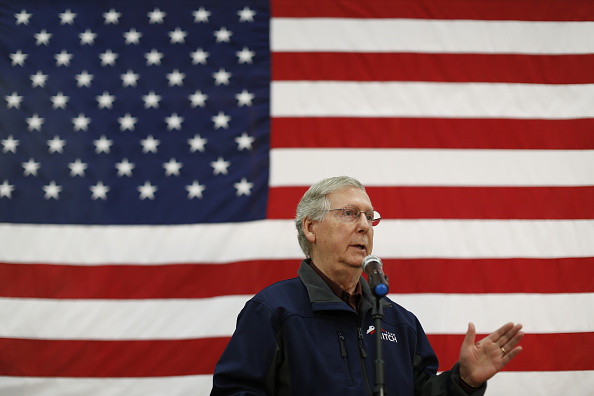
Every two years, the call goes out from hill and dale: “This is the most important election of our lifetimes,” politicians trumpet to the crowds. Democracy, after all, prefers a fight with stakes, especially in America.
Then came the 2014 election, when no one even lifted a horn. There were stakes, and certainly fights, just never a feeling that it mattered all that much. In a nation mired in discontent—less than one in four still said they were satisfied with the direction—the people no longer found choosing the lesser letdown satisfying. A week away, one poll showed just 29% of voters held a positive view of the GOP; only 36% could say the same about Democrats. Enthusiasm for voting, as measured by Gallup, dropped to 2002 levels.
Now we come to the final hours of this miserable season. It’s likely, though not certain, that when you wake up Wednesday, Republicans will control the Senate for the first time since 2006, give or take a recount in the West or a runoff in the South. But don’t expect that result to tell you much about the direction of the country. The generic ballot is dead even, with Americans preferring Democratic and Republican Congressional control in equal measure, a shift from 2010, when Republicans enjoyed a clear advantage.
Other indicators contradict as well. Republicans lost no governors in 2010, but find themselves playing defense in four states. Republicans in Maine, Kansas, Wisconsin and Florida could all go down, consumed by local missteps and general malaise. Democrats have made a close Senate race in deep red Georgia, and an independent has spooked a Republican stalwart in Kansas.
Take it all instead as a grim starting point for the next phase of American political history. When the polls are finally settled and the new suits take their place, the dream of the last decade, which began with Barack Obama’s 2004 keynote at the Democratic National Convention, will end. “There’s not a liberal America and a conservative America. There’s the United States of America,” Obama said. The nation sent him to the White House to make it so. Then the divisions won.
They define us now more than ever, both in geography and time, and there is no leader in American political life with a credible plan for getting us out of the rut. Republicans dominate not just in red states and red districts, but in red years, the midterm cycles where only about 90 million show up at the polls. Democrats have the blue states and districts, and presidential years, when 130 million people, including all of Obama’s “Cousin Pookies,” cast their ballots.
Each side is assured a piece of the pie, and neither has incentive to move from its positions. “When you step in the voting booth, you’re making a choice not just about party, not just about candidates,” President Obama told his crowd Sunday, at an event in Philadelphia. “You’re making a choice about two very different visions of America.”
What he didn’t say was the fact that has tortured his second term: neither vision will become a reality anytime soon. Asked months ago by NBC’s Chuck Todd for the rationale behind the Senate staying Democratic in 2014, the best the President could muster was “it makes a big difference if we’ve got at least one branch in Congress that is presenting these ideas, making arguments.”
Message control, in other words, has replaced governing. Anyone with a television knows it has consumed campaigns, as well. Instead of leaders looking to debate ideas, or even to express ideas, candidates appeared trained like parrots to repeat the same vapid lines over and over again. With no way of dealing with the economic anxiety that dominates, they fanned fears around Ebola, immigration and women’s reproductive rights. The only campaign ad anyone will remember 10 years from now was a former Iowa farmer, Joni Ernst, saying she knew how to castrate hogs.
The irony of this new cynicism runs deep. The Republican Senate strategy was to endlessly repeat in races across the country that Democrats “voted with the President 90% of the time.” The line worked on two levels. It motivated the GOP base by evoking Obama. And it served as a character attack for the rest of country, who actually want to see their government function again. American voters want candidates who can think for themselves.
If the line sounded familiar, it’s because Democrats used it on Republicans in 2006, when they retook Congress, and Obama used it again in 2008. “It’s not change when John McCain decided to stand with George Bush 95% of the time, as he did in the Senate last year,” Obama said.
Chances are, the line will work again in 2016, in 2018 and in 2020. Another $4 billion, or $5 billion, or $6 billion will be spent spreading the message in each of those years. Voters will choose again to buck the status quo, and will soon find themselves once again right where they started, facing down the most important election of their lifetimes.
More Must-Reads from TIME
- Why Trump’s Message Worked on Latino Men
- What Trump’s Win Could Mean for Housing
- The 100 Must-Read Books of 2024
- Sleep Doctors Share the 1 Tip That’s Changed Their Lives
- Column: Let’s Bring Back Romance
- What It’s Like to Have Long COVID As a Kid
- FX’s Say Nothing Is the Must-Watch Political Thriller of 2024
- Merle Bombardieri Is Helping People Make the Baby Decision
Contact us at letters@time.com